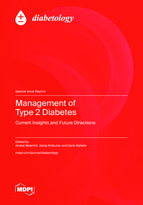3D-Printed Insoles for People with Type 2 Diabetes: An Italian, Ambulatory Case Report on the Innovative Care Model
Round 1
Reviewer 1 Report
Please read the attachment. Thank you.
Comments for author File: ![]() Comments.pdf
Comments.pdf
Please review the manuscript for grammar, sentence structure, and overall clarity and ensure the information is presented logically and organized, allowing readers to follow the study's processes and outcomes easily.
Author Response
Please see the attachment. Point-by-point replies refer to both Reviewer 1 and Reviewer 2 since in some cases comments and replies partly overlap.
Thank you very much for the constructive comments.
Author Response File: ![]() Author Response.docx
Author Response.docx
Reviewer 2 Report
This is an interesting pilot study investigating 3D printed insoles for TD2 patients.
Some issues should be addressed:
- intdoduction is rather long, but unfocused - I suggest focusing on the main goal and hypotheses in the end of the section
- in Methods, more inforlation regarding patient enrolement is needed - how were they approached, were they compesated in any way, how many declined invitation? Also, how was sample size estimated?
- more emphasis on patient characteristics in the results (table) and discussion section is needed (how it influenced results possibly)
- results are written in a very long manner, with lack of full sentances - I reccomend more focus, shortening the section
- Discussion repeats some unneccesary information (e.g. lines 433-447)
- Key findings should be written in normal sentances, summarizing main results
- what were limitations of this study? add them into discussion
- more emphasis on future clinical implications this study is bringing should be added to discussion
-
Author Response
Please see the attachment. Point-by-point replies refer to both Reviewer 1 and Reviewer 2 since in some cases comments and replies partly overlap.
Thank you very much for the constructive comments.
Author Response File: ![]() Author Response.docx
Author Response.docx
Round 2
Reviewer 1 Report
Dear Editor and Authors:
Thank you for providing the point-to-point response.
The authors have carefully and patiently corrected and answered the comments and questions. The manuscript looks improved significantly now, and the reviewer strongly suggests it be accepted for publication in this journal.
Please feel free to reach out to me if you have any more questions or concerns.
Thank you for reading.
Author Response
Thank you very much for the comments and the positive feedback
Reviewer 2 Report
The authors haclve addressed each of the concerns and improved the manuscript.
I have no additional comments.
Author Response
Thank you very much for the comments and the positive feedback





